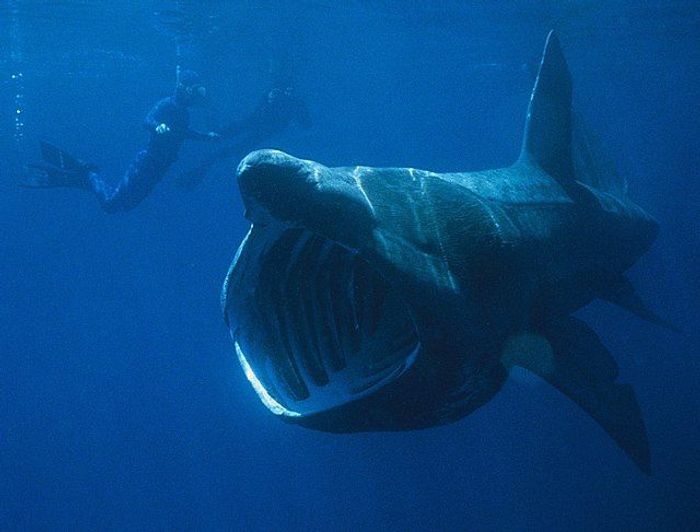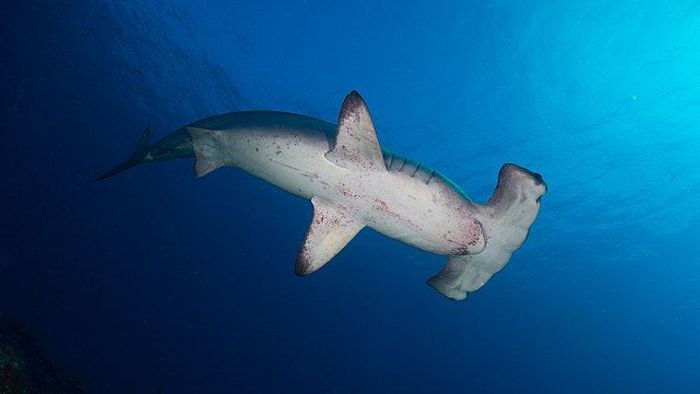Endangered Sharks that Need Our Help
Sharks are disappearing from the ocean. Here are the reasons why, and a list of the 10 most endangered shark species today.

Sharks have been one of the oldest species to live in the world. With fossil records dating back 400 million years ago, these majestic predators have proven their importance in maintaining balance in the marine ecosystem.
Over the years, more than 500 species of sharks have been discovered by humans. Unfortunately, according to the International Union for Conservation of Nature (IUCN), 30% of these species are vulnerable, endangered, or critically endangered. With the changing environment and human threat, more and more sharks face the danger of extinction soon.

Reasons Why Sharks Face Extinction
After millions of years of existence, scientists have reported a drastic drop in the sharks’ population in just the last generations. After about 400 million years, sharks are starting to disappear.
You might be wondering how these majestic creatures came to the verge of extinction? These creatures evolved to become predators, not preys. That being said, sharks take a long time to reach sexual maturity and reproduce. They produce very few offspring every one to three years, unlike other animals. So, because of this biological limitation, sharks face the danger of becoming extinct.
Today, there are about 100 million sharks killed by men annually. Commercial fishing devastates the shark population worldwide. Adding to the problem is the illegal, underreported, and unreported fishing and the high death toll brought by overfishing and bycatch.

What are Overfishing and Bycatch, and Why Do They Harm Sharks?
People may think that everyday fishing is a harmless activity, and that is true. However, anything more than normal becomes harmful - overfishing for one.
Overfishing happens when a huge number of fish are removed from their environment faster than they can naturally reproduce. The effects are usually seen when small fish are removed from the ocean before they could grow. It causes the food chain to be rattled as bigger fish feed on small fish to survive. This has adverse effects on sharks.

A team of ecologists at Dalhousie University, led by fisheries biologist Ransom Myers, has found out that overfishing the largest predatory sharks led to an explosion of their ray, skate, and small shark prey species. As an effect, the increase in predation of these rays inhibits the recovery of oysters and clams from the effects of overexploitation and habitat destruction.
According to the same study, aside from large sharks being a hot target in numerous fisheries, they are also snagged as bycatch.
Bycatch is a marine animal that is caught unintentionally while catching target species. Bycatch can either be marine animals that are undersized, juvenile, of the wrong sex of the species they target. As for sharks, they have been snagged bycatch in fisheries targeting tuna and swordfish worldwide. The question is, why?
Shark Finning
Annually, there are about 100 million sharks killed for its fin. This is in addition to tens of millions more sharks killed through illegal, unregulated, and unreported fishing.
Shark finning is the practice where the fins of live sharks are cut off before they throw them back into the ocean, living or dead. This practice leaves sharks immobile and unable to hunt their prey, experiencing a low and painful death. But, why is this done?
The consumption of shark fin soup dates back from the Sung Dynasty. It is considered one of the eight treasured foods from the sea. However, for the past two decades, shark fin soup has been in demand in China. People of high stature consume this soup as it is a statement of social status and privilege. At first, eating a bowl of shark fin soup, which costs up to US$100, was a luxury. However, because of the booming Chinese economy, hundreds of millions of people can now afford this soup that has become the highlight of important events and celebrations. In fact, it is estimated that around 73 million sharks are killed annually for this purpose alone. It pushes many species to the brink of extinction, especially the ones listed below.
10 of the World's Most Endangered Sharks
1.Daggernose Shark (Isogomphodon oxyrhynchus)
The daggernose shark is a cartilaginous fish. This species of sharks were once abundant in the shallow, tropical waters of the Caribbean Sea, Northern Brazil, and Central Western Africa.
The daggernose shark is known for its long, prominent snout and its gray, gray-brown color. It has large, paddle-shaped pectoral fins with a white underside. Their diet mainly includes schooling fishes like clupeids, herring, anchovies, and sciaenids.
The daggernose sharks face the threat of bycatch in unregulated artisanal gillnet fisheries operating throughout its range. Under the Endangered Species Act, daggernose sharks have been listed endangered by NOAA Fisheries in 2017.
2. Sawback Angelshark (Squatina aculeata)
The sawback angelshark was once common throughout the subtropical waters of the Mediterranean Sea and the eastern Atlantic Ocean. It is also known as the monkfish or spiny angelshark.
These sharks have a flat, blotchy gray body which helps them camouflage as they lay still in the ocean bottom. They measure about 1.25m long and can grow up to 2m. This species of shark is an important predator at the bottom of the ocean. Its prey includes small sharks, bony fish, and crustaceans.
The sawback angelshark faces the threat of commercial fishing by demersal fisheries that are operating throughout its range. Under the Endangered Species Act, sawback angelshark have been listed endangered by NOAA Fisheries in 2016.

3. Basking Shark (Cetorhinus maximus)
The basking shark is the second-largest fish in existence, the whale shark being the largest. These massive creatures thrive in warm to cool water temperatures and prefer to swim close to the shore and near the water surface. This is the reason why they are also called “sunfish.”
The basking shark can grow to lengths of over 10m and has a mouth that measures up to 1m in width. Its mouth has several rows of many diminutive teeth. Despite their enormous size, these sharks feed on Zooplankton. These are tiny animals that are found near the water’s surface. Thanks to its gill rakers, basking sharks are able to filter the plankton out of the water.
4. Striped Smooth Hound (Mustelus fasciatus)
The striped smoothhound shark lives near the seafloor in depths between 3 and 820 ft along the continental shelf. This species is commonly found on the coast of Brazil, Uruguay, and Argentina.
The striped smoothhound shark has a sharply pointed snout, small eyes, a large head. Its dorsal side is commonly gray or gray-brown in color with white underneath. The diet of the smoothhound includes mostly box crabs, fishes, and mollusks.
The striped smoothhound sharks face the threat of commercial and artisanal fisheries operating inshore habitat and nursery areas, with bycatch posing the most threat. Under the Endangered Species Act, striped smoothhound sharks have been listed endangered by NOAA Fisheries in 2017.
5. Smoothback Angelshark (Squatina oculata)
The smoothback angelshark is a cartilaginous fish found in abundance throughout the Mediterranean Sea and along the Eastern Atlantic.
The smoothback angelshark is recognized for its ray-like shape. Its big thorns and tooth-like structures on the skin by the snots distinguish this species from other angelshark. Likewise, it has noticeable symmetrical white spots on its pectoral fins and body. Its diet is composed mainly of small fish.
The smoothback angelshark face the threat of commercial fishing by demersal fisheries that are operating throughout its range. Under the Endangered Species Act, smoothback angelshark have been listed endangered by NOAA Fisheries in 2016.
6. Pondicherry Shark (Carcharhinus hemiodon)
The pondicherry shark is a small and stocky gray shark that is commonly found in remote regions. This species of shark was once abundant in the Indo-Pacific coastal waters. It is commonly spotted in India to the Gulf of Oman and is known to survive in freshwater like the rivers of Hooghly and Saigon.
The pondicherry shark is also known as the long-nosed shark, which was last recorded in India in 1979. However, in 2019, a species of this shark was believed to have been discovered in Sri Lanka.

7. Scalloped Hammerhead ( Sphyrna lewini)
The scalloped hammerhead shark got its name from the shape of its head- hammer. It also comes by the names: bronze shark, kidney-headed shark, or the southern hammerhead shark.
The Scalloped hammerhead shark is mostly found on the continental shelves. It prefers to wander on deeper waters in depths of around 500m. However, they can also be spotted at depths of around 25m. This species of shark is sensitive to light.
The scalloped hammerhead sharks face the threat of commercial fishing for the shark fin trade. Under the Endangered Species Act, two distinct populations of the scalloped hammerhead sharks have been listed endangered by NOAA Fisheries. Two ore have been listed as threatened.
8. Whale Shark (Rhincodon typus)
The whale shark is the largest fish in the sea, measuring up to 40 ft, and sometimes, more. These enormous species of shark populate all tropical seas. During Spring, they are known to migrate to the continental shelf of the central west coast of Australia, near the Ningaloo Reef.
The whale shark is a docile fish that allows swimmers to hitch a ride occasionally. It is known for its flattened head sports and a blunt bout above its mouth with short barbels protruding from its nostrils. Just like human fingerprints, the whale shark possesses a unique pattern of spots. This allows people to identify individual sharks. Despite its massive size, it mainly feeds on planktons.
Whale sharks face the threat of unregulated fisheries, often a victim of bycatch. They are in demand for their meat, fins, and oil. As of today, these whale sharks are listed to be vulnerable species.
9. Ganges Shark (Glyphis gangeticus)
The Ganges shark is regarded as a true river shark. It was only found within the middle and lower reaches of freshwaters, estuarine ecosystems, and inshore marine.
The Ganges shark reaches up to 1.78 m in length. It is described to have a gray or brown color without distinguished markings. To adapt to living in turbid waters, this species of sharks have small, tilted eyes with nictitating eyelids. It has two sets of teeth - the upper set, which is composed of broad, serrated, and triangular teeth - plus the lower set, which is made up of long, protruding, and underrated cutting edges.
After a single sighting in 2006, the ganges shark was next spotted in the Mumbai fish market last 2016. They are often a victim of overfishing and bycatch, mainly for fin and jaw trades. Today, it is listed as a critically endangered species on the IUCN red list.
10. Northern River Shark (Glyphis garricki)
The Northern River Shark is one of the rarest shark species in the world. It is known only in a small number of locations, particularly in Western Australia in 1986. It is so rare that there have only been 36 specimens recorded since its discovery.
The northern river shark grows up to 2.5 m long. Its eyes are usually small. Due to the size of its eyes, this species of shark rely on their ampullae of Lorenzini. These organs allow the shark to sense the electric fields of other organisms. It allows northern river sharks to find their prey in the turbid waters.
This species faces the threats of habitat degradation, commercial and illegal net fishing, and bycatch. Today, the northern river shark is listed as critically endangered on the IUCN Red List and endangered under the EPBC Act.




